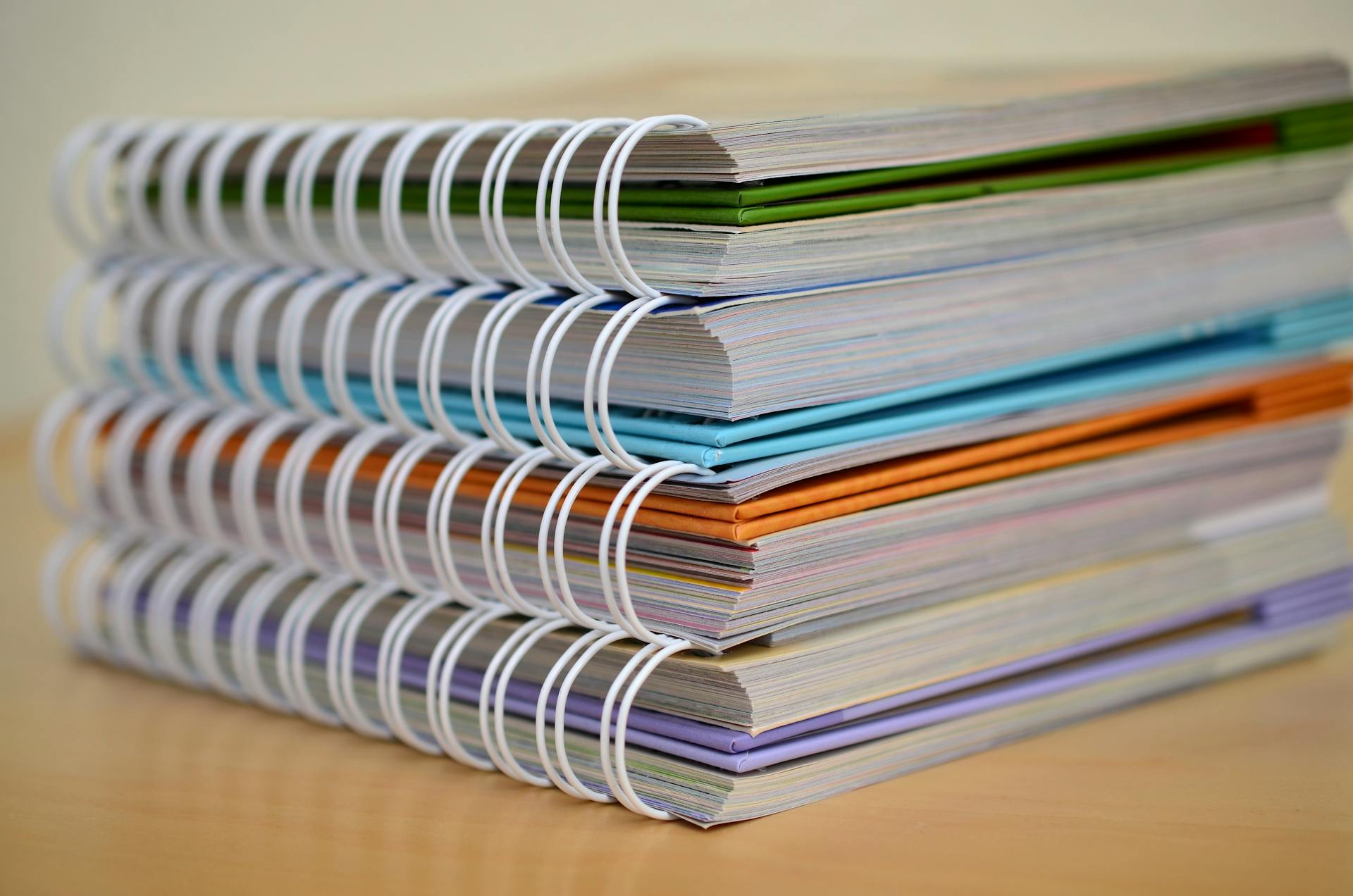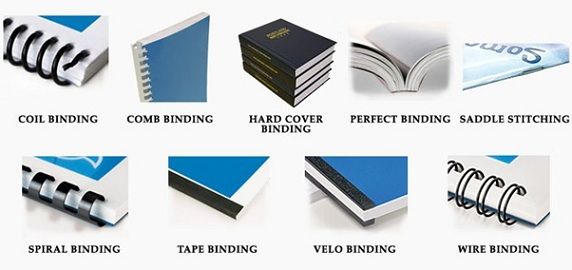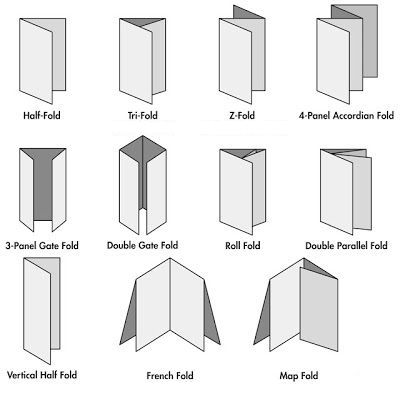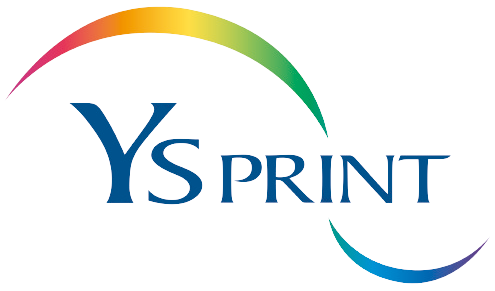
Binding refers to the methods used to secure the pages of a document together. The choice of binding method depends on factors such as the type of publication, the number of pages, and the intended use.
Types of binding used at YS Print include:
|
Saddle Stitching |
Pages are folded in half and stapled along the fold. This method is often used for booklets, magazines, and brochures with a lower page count |
|
Perfect Binding |
A square spine is created by gluing the pages to the cover. This method is commonly used for paperback books and thicker publications |
|
Wire-O Binding |
Pages are secured with a double-loop wire along the spine. This allows the document to lie flat when opened and is often used for notebooks, calendars, and manuals |
|
Spiral Binding |
Pages are held together with a continuous plastic or metal spiral coil. This binding method is popular for notebooks and presentations |
|
Case Binding |
This method is used for hardcover books. It involves sewing the pages together, gluing them to a cover board, and attaching a fabric or paper cover |
|
Comb Binding |
A series of plastic combs or spines are used to bind the pages. This method allows for easy page removal and addition |

Finishing processes come after the binding and involve various techniques to enhance the appearance and functionality of the printed piece.
Types of finishes we offer include:
|
Lamination |
A thin layer of plastic film is applied to the surface of the printed material, providing protection and a glossy or matte finish |
|
UV Coating |
A clear liquid coating is applied to the printed surface and cured with ultraviolet light. This adds a glossy finish and enhances durability |
|
Embossing & Debossing |
Raised (embossed) or lowered (debossed) patterns are pressed into the paper, adding a tactile and visual element |
|
Foil Stamping |
Metallic or colored foil is applied to specific areas of the printed material, creating a shiny and decorative effect |
|
Die Cutting |
Custom shapes are cut out of the printed material using a die, allowing for unique and intricate designs |
|
Folding & Scoring |
Folding gives the printed piece its final form, while scoring involves creating a crease to prevent cracking on folded edges |
|
Perforation |
Small, evenly spaced holes or cuts are made to allow for easy tearing or separation of specific sections |


